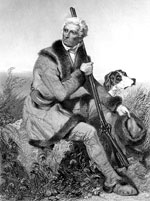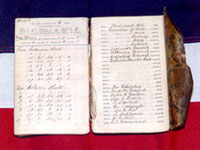George Percival Scriven: An American in Bohol, The Philippines, 1899-1901
![Photo, [Native Police, Cebu], Duke University Photo, [Native Police, Cebu], Duke University](/sites/default/files/website_image/GeorgePercival_Image.jpg)
Presents the diary of officer George Percival Scriven (1854-1940), part of the U.S. Army's occupation of Bohol--a Philippine island--from 1900 to 1902. "The journal was written partly as a personal memoir and partly as a draft of notes for a book that he was planning on writing." A background essay of 6,000 words on the occupation and one of 350 words on Scriven furnish the context for this valuable document, which is accompanied by 25 photographs from four other Duke University collections. This site also offers six links to related sites. Useful as a description of Philippine life through the eyes of an American soldier and for its first-hand account of the surrender by the President of the Provisional Republic of Bohol to American troops.



